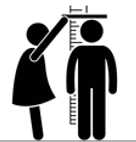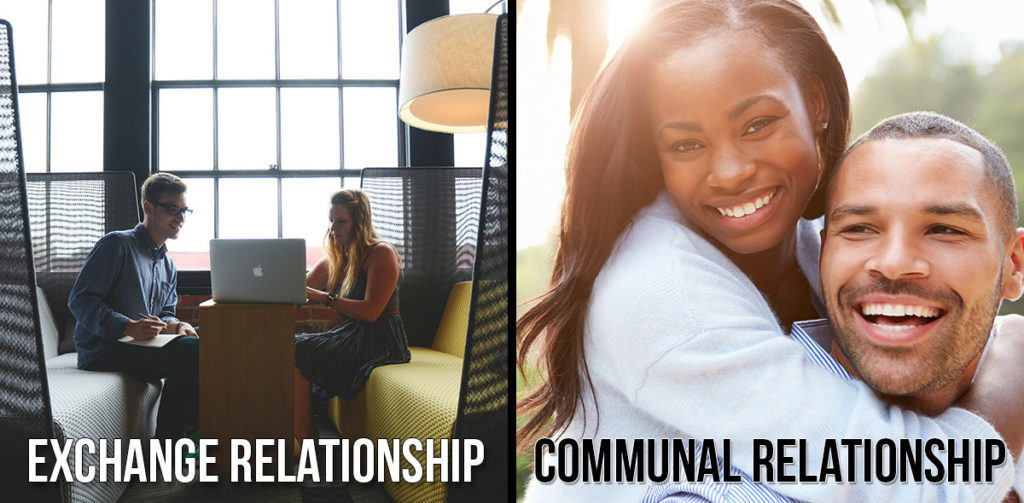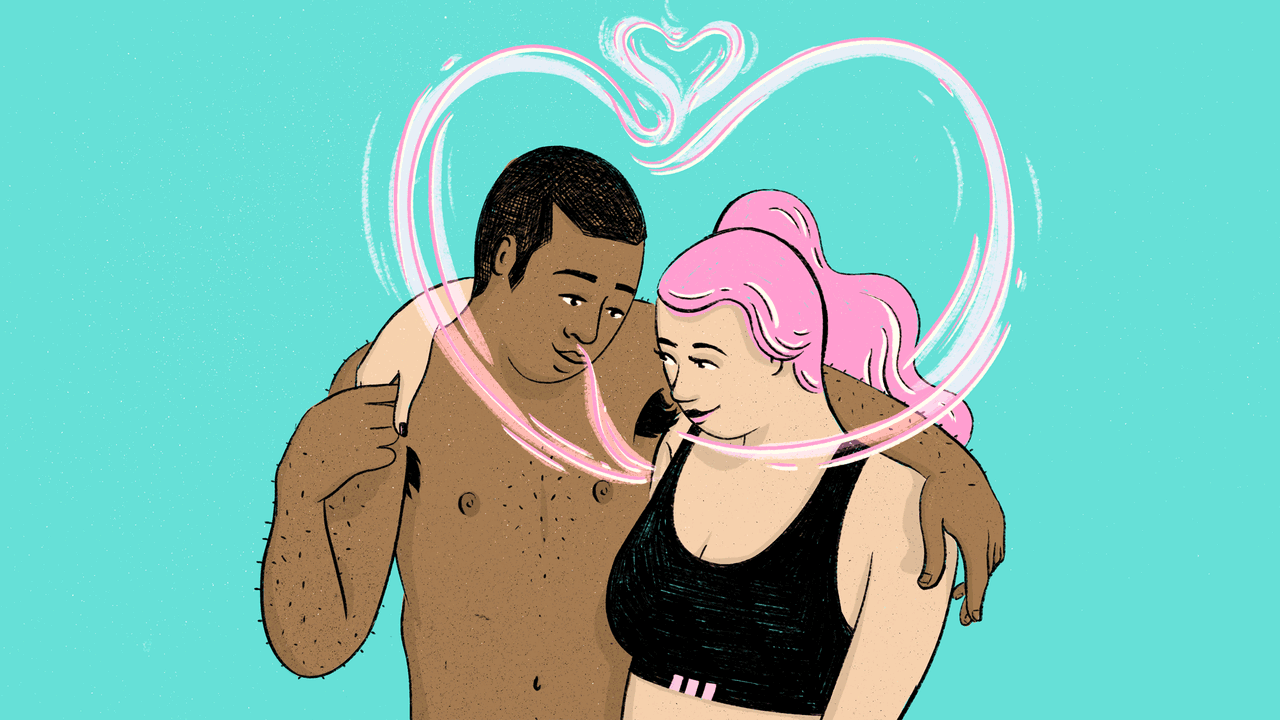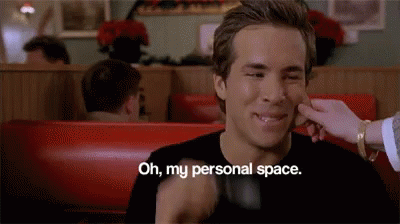February 26th, 2020 — Uncategorized
By: Joe Mikalauskas, Cici Montalvo, Emily Whitty, Jamie Handley, Maya Lamprinakos, Sam Hoey
How do social media trends get started in the first place?
Social media trends tend to be initiated by everyday users rather than traditional mass-media outlets. Zhang et al., 2016 found an initial peak of trend popularity fueled by “crowd” users, followed by a subsequent reappearance of the trend after it has been picked up by one of the traditional media sources. While these larger media outlets are largely responsible for the persistence of these trends, their origins are actually with everyday people! But what makes some trends more likely to be spread than others? One study addressed this question, and found that the emotions elicited by the trending topic are essential to their “spreadability.” Trends that elicit more high arousal emotions, like fear, anxiety, and amusement are more likely to be shared than ones that elicit low-arousal emotions, like sadness and contentment. This means that the more excited the trending topic makes the reader, the more likely that reader is to show the article to their friends, and their friends, etc.
Influencers get you to buy things!
The micro-celebrities of the internet, known as Influencers, have a lot more control than you think over what products you buy. According to a study completed in India, women were extremely likely to buy a product if they have seen it consistently advertised across platforms, especially if it was posted by an Influencer (Sudha M. & Sheena K., 2017). Social media plays such a large role in our everyday lives, which causes the possibility of buying a product due to social media advertising to increase. A similar study looked at how even outfit of the day posts (OOTD) put up by non-Influencers on Instagram can also increase purchases (Abidin, 2016). With fashion brands and outfits, specifically, women tend to be more affected by these trends and show an increase in clothing purchases related to the amount of fashion content they see on their social media feeds. OOTD posts also brought attention back to the original Influencers that made the posts, which creates a circle back to people buying products based off of their advertising!
How do social media trends affect advertising?
Over the years, technology has taken society to a new level. Social media has flourished at an extreme rate since the start. This includes advertising. Advertising has declined since social media has taken over the world. Every advertisement can be accessed from a mobile device today. How has this affected advertising companies? Producers of advertising are no longer in control of their products. Social media has now put the consumer in charge. From services such as online shopping, or Kroger click-list, consumers no longer have a need for cut out coupons, or flyers. Everything is accessible from a digital device, with a click of a few buttons. Offline advertising is no longer relevant in this technological world. The rate of success for offline advertisements has declined. Technology has single-handedly changed the world of advertising from a physical standpoint to an interactive standpoint. With the easy accessibility and consumer control, advertising is better today, because social media has flourished so much, changing the way the consumer can access their needs.
Social media trends have an influence on younger generations.
If you were to walk into a high school and observe students on their phones, how many do you think would be on some sort of social media platform? A study was done on adolescents between the ages of 13 and 18 in Ontario, Canada. It was found that 80% of these kids use their phones and social media daily. Around 50% of them are online for more than 2 hours every day. Students who reported spending more time on social media rated their mental health as poor or fair and having a low self-esteem. Because teenagers’ minds and personalities are still developing, their curiosity and their ability to be influenced is at its peak. Social media affects trends because it is a faster way to increase the likelihood of more people seeing it and it becoming viral. Teenagers are easily persuaded by social media trends and conforming to the crowd for the need of fitting in. Surprisingly, social media trends have a huge effect on the mental health of teenagers and the necessity to hop on the latest trends to be considered “cool” in the eyes of their peers.
Social Media prays on the short attention spans of consumers.
Social Media prays on the short attention spans of consumers and this trend has been copied in all types of media. This trend was first noticed in the TV show Sesame Street (Newman, 2010). Creators of the show used these techniques to keep their younger audience engaged. Later, multiple social media networks [picked up on these techniques and ideas and implemented them into their technology. A great example currently is TikTok. TikTok is a social media platform where users can post short videos that are restricted to under a minute long. TikTok has done this purposely to keep their audience engaged. Users are exposed to constant new stimulation since each video is very short. Another technique that the social media platform uses is that on their main page they do not display the time on the top of the page. This allows the user to lose track of time while scrolling through posts. Titter uses similar techniques by limiting posts to 140 characters (Yan, 2011). These trends and techniques can be seen across almost all social media platforms and media outlets in general.
Different movements and communities trend through social media.
MeToo Movement
There are many trends that take place through social media and many trends that become popular to the world normally happen because it’s important and impactful. The Me Too Movement was, and still continues to be, a very impactful trend that took off through social media and having people share their story and making their voice heard. Twitter was one platform that covered this movement which started with #metoo trending which slowly began to grow bigger through social engagement (Manikonda, L., Beigi, G., Liu, H., & Kambhampati, S. 2018). The Me Too Movement took off because of the attention it was receiving on Twitter through the hashtag and because people were allowed to share their voice and relate back to others. Because of #metoo, this allowed for trends to become bigger and it gave more people an outlet to share their story.
LGBTQ Community
The LGBTQ community has been expanding over the years and part of this is because of social media and people being able to share their voice. Even though there are people online who have not been supportive, this community has made great changes in history and it would not have been the same if social media was nonexistent. Specifically, transgenders have paved a strong path for their community on social media. 94% of 18-29 year-olds who are transgender are on social media and have found to be strong advicators for themselves and their community (McInroy, L., & Craig, S. 2015). Because of social media communities, like the LGBTQ, are able to have a stable community while also sharing how they feel through social media. This connects back to trends on social media because the LGBTQ comminuty is able to express new trends within their community and share it with the world.
February 18th, 2019 — Uncategorized
Article by: Nicole Moughrabi, Joely Watson, Angie Spasojevic, Kaylie LaGuardia, Alexis Mattson
Do you ever find yourself looking at another person and thinking, “that person is SO attractive.”
Likely.
Do you ever question why? What about this other person is so attractive?
This probably seems like it comes with obvious answers. They’re attractive, they’re funny, whatever. Although these characteristics certainly stand out, have you ever considered that you may be developing feelings for someone just because they happen live near you? Or the color of their shirt?
If you want to know about some of the more surprising reasons that we become attracted to one another, welcome to: 10 reasons you are totally crushing on them.

1. Women in Red:
Women wearing red have often been romanticized as attractive beauties in classic tales from the beginnings of literature and film. To test this iconic concept, Elliot & Niesta (2008) conducted five experiments to examine the effect of the color red on men’s attraction to women. Confirming the old fables, men found women more attractive when wearing red compared to other colors, and even when women were displayed in pictures with a red frame (compared to a white frame). Women who rated the same pictures did not exhibit the red effect, and color also had no impact on men’s ratings of women’s personality traits (like kindness or intelligence). Thus, let it be known that the stereotype holds, women in red are making power moves.

2. Waist-to-hip ratio:
In the words of Shakira, “My hips (and waist!) don’t lie.” According to the results of three studies, heterosexual men are attracted to women with lower waist-to-hip ratios (in other words, an hourglass figure). Study 1 documents the fact that while body sizes of Playboy models and Miss America winners have changed over the years in accordance with cultural trends, the prevalence of models with low WHR has remained stable. Studies 2 and 3 found that men rated women with lower waist-to-hip ratios as appearing to be healthier and more physically attractive than women with higher WHR. Why would this be the case? As it turns out, low WHR is associated with women’s reproductive health and fertility. While men might not consciously be thinking about “child-bearing hips,” ancestral men who were attracted to women with low WHR had better reproductive success than men who didn’t, and men today still retain that preference.

3. He’s Got Money $$$:
If Justin Bieber hadn’t become rich and was instead sitting in your English class, would he still be considered one of the most attractive people on the planet? Research using 1000 male advertisements in two news papers showed that males are considered to be rated as much more attractive when it is known that they have either more money or power. In fact, when asked to describe themselves, men were even more likely to mention their wealth than women were. This finding has also been replicated and has become a known mechanism for attraction in social and evolutionary psychology. Evolutionarily, ancestral women who preferred mates that provided security had better odds of being able to feed and raise successful offspring, and these preferences have been passed down to women today.

4. Birds of a feather flock together:
Have you ever heard that “Opposites attract?” Well, in actuality, this might not be the case. According to one study, people tend to find others more attractive if they share common traits, interests, beliefs, and attitudes. Participants were asked to rate photograph faces as “highly attractive,” “moderately attractive,” and “unattractive.” Afterwards, personality information was added about the people in the pictures, and participants were asked how similar the person was to themselves and how much they liked the person. The results indicated that as perceived similarity increased between the participants and the people they rated, attraction increased too. This suggests that similarity may drive attraction moreso than complementarity.

5. Their feelings for you are a mystery:
They love me. . . They love me not? Have you ever heard the phrase “we want what we can’t have?” As odd as it may sound, we may find it attractive when someone is uncertain in their feelings towards us. A study done by Whitchurch, had 47 undergraduate women look at 4 male profiles. They were told that the men either liked them tremendously, liked them only an average amount or liked them either tremendously or an average amount (in other words, they made the women uncertain about how much the men liked them). Surprisingly, the female students were far more attracted to the men that were within the uncertain condition in comparison to the other two conditions. So, perhaps a little uncertainty can pique our interest in someone and leave us wanting more. (However–point 6 shows us that this isn’t the end of the story.)

6. Commitment is key:
While the ambiguous feelings of a “mystery man” may increase initial attraction, research also indicates that relationship success is more likely when partners are clear about their commitment to each other. The happiest couples that are in it for the long haul tend to have higher levels of commitment and investment in the relationship, which is predicted by “quality of alternatives,” or in other words, whether you only have eyes for your partner, or are still looking around at other potential partners. In contrast, people who seem to always be looking for a “better option,” demonstrate less commitment and have shorter, less satisfying relationships. So, while there may be appeal in someone that leaves you itching for more attention, you’re better off with someone who is willing to be clear about their feelings.

7. The benefits outweigh the costs:
It may not sound very romantic, but research on social exchange theory suggests that in some ways, our relationships may operate according to economic principles like “cost/benefit” ratios. In other words, if one partner feels that they incurring more costs from a relationship than benefits, they will likely find that relationship less satisfying, and thus be more likely to break it off. This effect has been demonstrated in committed relationships of both opposite-sex and same-sex couples.

8. They’re the class-clown:
Everyone loves the funny guy… or gal! In one study, undergraduate students were given descriptions of a potential romantic partner, which described the person as desirable in a number of important ways (e.g., being attractive, ambitious). Additionally, the researchers manipulated what participants were told about the person’s sense of humor: some were told that this person had a good sense of humor, some were told that the person had an average sense of humor, and some were told that they did not have a sense of humor. Both men and women in the study rated the people described in the profiles as much more attractive if they were told that they had a good sense of humor. So keep those jokes coming!

9. You live close to one another:
Your attraction to someone can be heavily influenced by a phenomenon called “the proximity effect” which describes the increase in attraction to people who are physically close to us. This effect has been demonstrated in a variety of studies. For example, Priest and Sawyer conducted research with 25,000 pairs of college students, and tracked their proximity to each other (i.e., how far away were their dorm rooms from each other) and their attraction to one another over a period of four years. The researchers found that simply living near each other and seeing another person regularly tends to increase attraction to and liking for that person.

10. He’s just the right height:
Tall, dark and handsome is what every woman wants, right? Turns out, most women actually prefer average-height, dark and handsome. A recent study evaluated women’s attraction to men who were described to be short, medium height, or tall. They predicted that women’s attraction would increase as height increased. What they found, however, was that males described as being “medium height” were rated as more attractive and more likable than either males who were described as short or tall. Interestingly, when men were asked the estimate how women would evaluate men’s heights, their ratings did not change as a function of height. However, the men’s own ratings reflected a preference for short men relative to tall men (this was true regardless of the participants‘ heights).

Hopefully we’ve helped you solve the mystery of why you’re totally crushing. But if not, I hope you enjoyed learning just a little bit more about the psychology of attraction!

February 18th, 2019 — Uncategorized
By Montana Shively, Valerie Spasojevic, Elbisa Lindov, and Trevor McFall
What Influences Our Political Beliefs?
Have you ever thought about why you believe what you do? Why did you vote for that candidate over their opponent? You might say that you vote based on your values, which you arrived at through careful thought and consideration–but research suggests that there is more shaping our political opinions than we may realize. Here are 8 interesting factors that studies show impact your political beliefs that you probably didn’t know! (Number 5 will shock you!)
1. Does your age change how you vote?
Age seems to play a role in voting behavior. In today’s society, many people assume that younger voters tend to be more liberal, while older voters tend to be more conservative. A study measuring the level of conservatism found that, on average, older voters tend to be more conservative in their views. The researchers also found evidence that age-related changes in personality and cognitive traits may explain why older individuals tend to be more right-wing. In particular, as people age they become lower on traits such as “openness to experience,” which describes preferences for new vs. familiar experiences, and higher on traits like “need for closure,” which describes the preference for unambiguous answers. The results suggested that shifts in these traits partially explained why age and conservatism were related.

2. How’s the weather? A natural disaster today can influence how you vote tomorrow.
Think about the last time a natural disaster affected your area (perhaps some recent hurricanes are coming to mind). Now, think about the public reaction in the wake of those disasters. Did the local or national government respond effectively? Research suggests that citizens hold their government leaders responsible for the damage experienced in a natural disaster. Why would this be the case? After all, politicians can’t control the weather. The results of one study suggest that citizens who are more affected by natural disasters are more likely to attribute storm damage to ineffective preparation on the part of their local government, and that these beliefs make them less inclined to re-elect their current officials.

3. Male or female? Does gender matter?
Have you ever considered that your gender may play a role in how you shape your political beliefs? Research indicates that men and women differ in terms of their political participation, ideology, and voting preferences. Studies have shown that men and women prioritize different issues. For instance, women in the United States show more support for spending on social programs and issues related to gender equality. Interestingly, women have also shift in typical voting patterns. After they gained the right to vote in the United States, women were relatively more conservative compared to men; since then, a steady upward trend toward liberal ideology has been observed in women relative to men. Women have moved from the right spectrum to the left. Women tend to vote more for the democratic party than men do! Both genders do see some similarities though! When government spending increases both genders tend to have a more conservative viewpoint. Isn’t that crazy?

4. Does who you love affect how you vote?
It may seem like an obvious point that sexual orientation would be associated with more liberal politics in the United States; after all, in recent decades, the Democratic party (moreso than the Republican party) has tended to engage in more advocacy for the rights of sexual minorities (e.g., marriage equality). It’s not a surprise, then, that members of the LGBTQ+ community would have more left-leaning politics. However, recent research indicates that there might be something more going on here than meets the eye. One study of LGB voters (compared to heterosexual voters) showed greater support for the Democratic Party for concerns related to civil liberties and rights for sexual minorities, but importantly, these weren’t the only political attitudes that differed as a function of sexual orientation. Having an LGB identity also predicted more liberal attitudes regarding abortion, suicide, and science. The author argues that just like other important aspects of identity (e.g., gender, race), sexual orientation fundamentally alters one’s experience of the world in a way that matters to one’s politics.

5. Can your genes impact your vote?
Did you know political orientation appears to have a genetic influence while evidence for environmental influences from parents to offspring was not found? Observed similarity between the political views of parents and adult offspring does not mainly come from how they were raised; there have been studies that have shown adopted children to have their real parents’ views. In other words, political beliefs appear to have a genetically based component. People choose different political attitudes, at least mainly, based on their genetic makeup. To add on to that, environment indicates that genetic factors also contribute to how we choose people. People with a specific political position also choose partners with similar attitudes, the partner in turn can help pass on their beliefs to their offspring. I know, I’m mind-blown as well.

6. How does money affect political attitudes?
Does being poor or being rich affect your political views? Well studies show it may indeed play a role. Although most of our political views come down to personal beliefs, evidence suggests that people with a higher socioeconomic status (or SES) in society tend to have more distinct right-wing orientations than do people with lower SES. This may seem obvious, given that more liberal politicians are likely to support social programs that benefit the poorer in society. Interesting, though, the researchers of the study linked above found that even priming people with concepts relating to money may have some impact on political attitudes. In particular, they found that when low SES participants were primed with money, they reported more liberal attitudes, but when high SES participants were exposed to the same prime, they reported more conservative attitudes! Well would you look at that, money does control you!

7. Can religion guide political opinion?
While different religions promote different messages, they all influence how we think about and perceive the world around us – even politics! One 1988 study found that members of an activist group called the Ohio Moral Majority had a strong subjective connection between their religious and political beliefs. For example, 91% of people surveyed in that study said religion had “a great deal of influence” on their stance on abortion, and 71% said the same for the Equal Rights Amendment. The strength of the connection between religion and politics varies by doctrine and religious identity, and influences some issues more than others.

8. Does more information always mean better-informed?
You might want to double check that political article in your Facebook feed – “fake news” is everywhere these days. In the old days, there were only a couple major news networks, but with the recent technological advances, you can find practically a different news station for every day of the year! This means that people can selectively choose networks that align nicely with their point of view, and not have to listen to different perspectives. This results in people adopting more extreme attitudes in a psychological phenomenon called group polarization, in which monolithic groups that lack a variety of perspectives reinforce the strength and extremity of the shared belief within that group. Social media platforms exploit group polarization by surrounding users with content that supports their held beliefs, creating more outrageous narratives that grab attention. More news has actually lessened our ability to form balanced perspectives – go figure!

What Does It All Mean?
Sometimes it’s difficult to admit we’re influenced by factors we have no control over (are we more controlled by our circumstances or our individuality?)–especially when it comes to something as personal and important as our political views. While it may feel like we believe what we do about political issues because we’ve thought hard and long our stance, research indicates that a variety of subtle factors exert meaningful influence on how we think about politics. It’s fascinating to learn more about why we are the way we are, and recognize that maybe, just maybe, we don’t know ourselves quite as well as we thought we did.
February 18th, 2019 — Uncategorized
By Sydney Caulder, MaryDrew Collier, Sydney Brenner, and Andrew Austin
What would you say if I told you that friendship is super important? You wouldn’t be surprised right? Well, what if I told you that it’s so important that it affects our physical health and self-esteem? You may be surprised to learn that people in your social circle could be having a direct impact on your welfare. That’s why it is so important to take the time to evaluate who you surround yourself with. Lucky for you, we did the research for you–here are a few things to keep in mind about your friends.

1. Caring for each other can help you care for yourself.

Having strong, healthy, close friendships is associated with better mental health in the short-term and the long term, so the care you provide to your friends will ultimately help you too. One way that friendships can become healthier to all parties is by continuously nurturing them. Healthy friendships involve kindness, open-mindedness, honesty, and willingness to listen to and support each other. Healthy relationships are also characterized by equality and individuality, meaning that it is also equally important to maintain a separate identity and have qualities unique to you.
2. Avoid friends that thrive on conflict.

Sometimes, we can become bonded with someone through shared negative experiences–this is a common and normal experience. However, if you reflect on a particular friendship and realize that most of the interactions you have with that friend are negative and characterized by conflict, you may want to reflect on the quality of your relationship. For example, one study found that while friendship was associated with better mental well-being overall, friendships that were prone to conflict did not yield these benefits. Say “no” to the negativity and find friends with more positive viewpoints.
3. “Fake” friend alert!

Tbh, lying just to make your “friend” feel better isn’t necessarily the way to maintain your friendship, and may actually harm it. For example, one study found that although we expect coworkers to mask or hide negative emotions like anger, we expect our friends to be authentic in expressing their emotions with us. When a friend can’t be honest with us, it signals a lack of trust and a lack of depth to the relationship. The truth finds its way to the surface eventually.
4. BFFs help each other without expecting anything back.

We do favors for friends, and our friends do favors for us. But the defining feature of a good friendship is helping without expecting anything back. This type of relationship is known as a “communal relationship.” In research done by Clark & Mills, they define communal relationships as “believing that one’s partner cares about one’s welfare and will attend and respond to one’s desires, needs, and goal strivings.” In deep, fulfilling friendships, the focus goes away from reciprocity and towards generosity. Cultivate friendships in which helping is sensitive to each others’ needs, rather than what you’re each getting back in return.
5. Spill ALL your deepest, darkest secrets to your friends.

Having the core of your friendships built on mutual respect, trust and friendship are the key elements of companionate love, which is the glue keeping close friends together. One way to build on those close friendships is being willing to spill your heart and soul out, and sharing all those intimate details (even your JUICIEST secrets) on your life and who you are as a person, known as self-disclosure. Research has shown us that this willingness to disclose deep information is what lies at the heart of our closest relationships. By sharing this information, we start to like the person more, because we know for sure we can trust them more. With friends you just make, you should consider matching the other person’s level of self-disclosure. By surrounding yourself with people you feel like you can share personal details with you create stronger, healthier friendships. So in order to take your friendships from a 0 to 100 on a whole new level, be willing to spill all your tea.
6. Our friends’ moods are contagious.

Do you have people in your life that constantly bring you down? If you do, you’re not alone–we’re all susceptible to “mood contagion,” or “catching” the moods of the people around us. This means that it’s important not to surround yourself with people with chronically negative outlooks. For example, one study examining mood contagion in the context of work group dynamics found that the mood of one person in the group (someone who was working with the experimenters, and was instructed to enact different mood states during the session) had a significant impact on the overall mood of the group, as well as their level of conflict and their overall performance on a task. If you leave a day of hanging out with a “friend” feeling emotionally drained or bad about yourself, ask yourself whether the friendship is worth “catching” their moods.
7. BFFs or BFFs?

“Maximization” is when one picks through many alternative options in order to find the “best” option. Maybe you do this when you’re trying to select a new laptop or outfit. However, some people are “maximizers” in their friendships, and try to evaluate who the “best” friend options are in their social circles. Research suggests that this may not be the best approach to cultivating deep, satisfying friendships. People who have a maximizing view of friend selection also report greater regret in their friendships, lower quality of life, and can lead to regret, lower quality of life, and less satisfying friendships. This may be because friendship maximizers are too busy wondering if they chose the best friend to actually have a best friend.
8. Hiding may be EASIER, but that doesn’t mean it’s BETTER.
But wouldn’t life be easier without putting in work for relationships? Keeping close relationships sounds like an exhausting, time-consuming task. Is it worth it? Spongebob doesn’t need it so why do I?

A large body of evidence suggests that without meaningful connections with those around us, our health suffers. People who lack social connectedness have lower immune functioning, unhealthy body mass indices, poorer blood sugar control, and decreased rates of cancer survival. You heard right, having good friends means better health. So go seek out that healthy social support!

February 18th, 2019 — Uncategorized
Article by: Kaeley Pollock, Jordyn Markle, Julia Ricciardi, Chaundra Jones, and Megan Karau
Love might be in the air, but sometimes it stinks. We’ve all been there: that moment where you are undeniably attracted to a person, but you just can’t peg why. A lot more goes into who you find attractive than just compatibility and similarity. Here are 10 surprising facts that impact romantic attraction. Enjoy reading, and feel free to use this information to your advantage.

1. A woman’s ovulatory cycle affects the type of man she finds attractive.

As odd as it may sound, studies have been done to research whether or not the ovulatory cycle has an impact on who she finds attractive. During days of high fertility, women are more attracted to men with masculine features in their face and body (which are signals of certain aspects of health). Evolutionary researchers have suggested that ancestral women who were attracted to these features when conception was most likely were more likely to have healthier offspring than women without those preferences. As a result, that preference became more common in humans, which is why women still show these preferences today.
2. We’re attracted to creative mates.

Both sexes prefer a partner that is creative in one aspect or another. Studies suggest that (in general) humans find partners with ornamental/aesthetic forms of creativity more attractive than those with applied/technological and everyday/domestic forms of creativity. Creativity can often be seen as a sign of commitment and uniqueness, both are positive traits one would want to pass on to their offspring. Also, the saying “opposites attract” does not ring true when it comes to creativity. People prefer partners that have creative achievement in domains in which they themselves excel.
3. Feminine voices are more attractive to men.

Men, have you realized that the women you notice as more attractive has a higher pitched voice? According to Puts, Barndt, Welling, Dawood, and Burriss (2011), higher pitched voices are more attractive to men because they sound more feminine, and feminine features are associated with certain features of female reproductive health. They studied this preference among men who were looking for a short-term relationship (like a one-night stand), and men who were looking for a long-term (or committed) relationship. Higher pitched voices were more found attractive overall, and this was especially true for men interested in a short-term relationship. Also, according to the women in the study, women with higher pitched voices sound more flirtatious than women with a lower pitched voice.
4. High sex drive is highly correlated to sexual attraction.

Studies have shown that there are some differences in sex when it comes to sex drive. Sex drive is correlated to sexual attraction in both sexes. With most women, high sex drive makes them more attracted to men and women whereas men that have high sex drive makes them attracted to only one sex and not both. Participants completed a questionnaire that asked a series of questions about sexual attitudes and behavior. It concluded that men’s sex drive is more correlated to sexual attraction with either same-sex or other-sex more than woman.
5.Attraction in the workplace.
Do you ever think you could find a romantic relationship at work? Do you think TV is making all this up for money? Well, turns out you actually can find a romantic relationship at work! There have been several studies done about how coworkers become attracted to each other. Factors that increase attraction are proximity to each other, attitudes/similarities, and arousal (physical characteristics). One factor that increases workplace romances is organizational culture, or whether your company approves of coworkers dating.
6. Attraction in exchange and communal relationships.

What are these you ask? An exchange relationship is where one person gives some kind of benefit to someone and the giver is expecting something in return. Say someone loans you money, and they expect you to pay them back. A communal relationship, on the other hand, describes friendships and romantic relationships, in which favors aren’t necessarily expected to be repaid. Say your partner gave you candy, because you were having a bad day, and you feel you need to give them something in return to say thank you. Actually, you shouldn’t! As it turns out, research indicates that using these kinds of “tit-for-tat” strategies in communal relationships can actually decrease relationship satisfaction, because they communicate to your friend or partner that you think of the relationship in “exchange” terms. So, do nice things for your partner because they’re great–not because they did something for you first.
7. Body language has an effect on attractiveness.

Did you know you could learn a lot about a person by paying attention to their body language? A person’s body language can express if they are mad, happy, or when they find someone attractive. Studies have shown that mimicry is one of the key signs that a person finds you attractive. In one study, researchers got participants to like or dislike another person, and then observed their subtle behaviors to see if participants were more likely to mimic someone that they liked (e.g., crossing their legs after the other person crossed theirs)–and they did! Other studies have demonstrated that we find others attractive when they mimic our behavior. Another key sign is postural expansiveness. Postural expansiveness refers to poses that expand the space beyond the body through widespread arms, legs and torsos. In this pose, a person is trying to showcase their best features to the person whom they find attractive. Findings like these demonstrate the importance of body language in both detecting and creating attraction.
8. Your next great love is right under your nose…literally.

Have you ever been weirdly enticed by a person? Like, you can’t put your finger on it. Is it their personality, looks, or smile? Or, could it be the special effects from their all-natural love potion no. 9? Research suggests that we are attracted to certain body odors. According to Roberts and Roiser (2010), women are more attracted to potential mates who have body odors that are dissimilar to their own. Furthermore, this research indicates that body odor is a cue to immune complementary, or in other words, having resistances to different types of pathogens. Having a complementary immune systems is theorized to be beneficial to offspring, because they are likely to inherit different resistances from their mother and their father. So, on your search for your potential significant other, be sure to take a big whiff.
9. Symmetrical faces are more attractive.

The more symmetrical one’s face is, the more likely they are to be deemed attractive. People whose faces are more symmetrical usually are judged as more physically attractive because facial symmetry is an indicator of good health. Across a variety of species (including humans), evidence indicates that as body and facial symmetry increase, attributes associated with better health and fertility also increase. Thus, evolutionary researchers suggest that we have inherited this ancestral preference, because those among our ancestors who preferred mates with more symmetry were more likely to have healthy offspring.
10. We’re attracted to people who are near to us.

People are also more likely to be attracted to those in close proximity. The proximity effect describes the fact that the closer people are to each other, the more likely they are to be attracted to one another. For instance, one study of college dormitory residents found that as the number of rooms between two people increased (i.e., living in the next room over vs. two doors away vs. four, and so on), the likelihood that they became good friends decreased. This effect may be explained by a variety of factors, including greater opportunities for interaction. So, who knows, your next great love may be living right around the corner from you.
Hopefully you were taking notes, because that concludes the 10 factors that you didn’t know that impacted romantic attraction. When searching for a prospective partner, you can never have too much information. Now get out there, apply your new knowledge, and find yourself a mate!

February 17th, 2019 — Uncategorized
By Alice Chandler, Casey Jo Gough, Kayla Hogan, Tesa Ingram, & Mattie Joseph
College is stressful, like, REALLY stressful. Getting zero hours of sleep and chugging 5 mugs of black coffee aren’t going to help. You won’t have time to research how to minimize stress through effective coping especially since you still have to write that paper due at midnight, so we did it for you.

Pitch Perfect / via GIPHY
You’re welcome. 😉
1. Time Management
One of the main factors contributing to stress in most people’s daily lives, especially college students, is procrastination. The solution to this is learning how to manage time wisely.

Spongebob Squarepants / ruinedchildhood
In a recent study, researchers found a correlation between performance and time management. Making lists, pre-planning, and creating schedules are only one aspect of managing time. The most important thing is to follow through with those commitments. By managing your time wisely not only you can minimize stress about deadlines, but also gain skills in efficiency and task management, and make more time for things you enjoy. Juggling everything that comes along with life as a college student can be difficult. Luckily, many universities offer counseling and mentorship services that will help students come up with ways to manage their time and will provide continued support so that students stick to those plans. To learn what your school has to offer, you should talk to your admissions counselor, RA, or any of your professors! 🙂
2. Sleep
Sleep is incredibly underestimated, mostly because we don’t have time for it but believe me, even a little rest drastically impacts our mood, productivity, health, and stress levels. Choosing to complete homework or binge a new Netflix series instead of sleeping isn’t a good call.

Winnie The Pooh / via GIPHY
Sleep deprivation induces many negative effects such as sluggishness, a lack of control over emotions, and impaired performance on tasks among many other symptoms according to this review of over 100 scientific studies. When you sleep for less than the recommended 6-8 hours a day, you may see an increase of blood pressure as a result of your body not falling into a deep slumber which is restorative to your health. A lack of sleep can also raise the activity in your brain’s stress systems which causes the impairment in performance and lack of control over emotions.
Getting a healthy amount of sleep can result in having more energy, a more focused attention, an improved ability to recall information, along with other benefits that can help to make a day go by smoother.
So, please GET SOME SLEEP. If you are having a tough time managing your schedule to complete work and get a healthy amount of sleep, reach out to an academic coach. They will help you manage time to match your academic needs, as well as keep your sanity.
3. Talk to Your Family
As an independent college student, emerging adults are often hesitant to reach out to their family in time of need. But studies have shown family support can be particularly helpful in college.

Girls, on HBO/ via GIPHY
Dealing with the everyday stress of college life can often be daunting, and many college students minimize family contact to feel strong, independent, and keep up appearances as parents can have great expectations of their children. According to a recent study, family support has been correlated with less stress overall, specifically for college aged women. The relationship served as a buffer for both psychological and physical strain, and resulted in a more easy-going-attitude. College students with greater family ties have also been shown to have higher self-efficacy levels. Self-efficacy is a person’s confidence and belief in their capability to perform tasks well, which is important to success in college. So, although it may seem counter-intuitive to the independent college kid lifestyle, connecting with family may actually reduce stress levels and improve your performance in classes. Putting aside expectations and overthinking to reconnect with parents and siblings can be a great experience of love, support, and de-stressing.
4. Watch What You Eat
Some people turn to food when dealing with a stressful situation. If your college has a buffet-styled cafeteria or you are prone to doing midnight food runs, then this form of stress management is right down your alley. Generally, stress leads to unhealthy eating decisions so reaching for some ice cream while you finish that 20-page paper may not be the best idea.

via strawberrylicorice.tumblr.com
Studies show that around 40% of people in the United States are obese, which is associated with a variety of negative health impacts. One factor that has been found to strongly contribute to obesity is stress. When we experience stress, we are more likely to crave comfort foods to help alleviate negative mood. Unfortunately, comfort foods are typically highly-processed, often high in sugar, and not terribly good for us.
So, how do we reduce stress-eating and prevent its negative effects on our health? One study suggests that practicing mindfulness may have positive impacts on both stress itself, and on stress-eating behaviors. Researchers found that a 4-month mindfulness training program, which focused on both stress reduction and on eating awareness, significantly decreased anxiety and improved eating patterns among participants. They also found that although the training program didn’t reduce weight or abdominal fat overall, participants who were obese at the beginning of the study showed significant decreases in abdominal fat by the end. If you’re interested in trying this out for yourself, look for a free mindfulness app for your smart phone!
5. Spend Time in Prayer
Church may not be your thing, and I know by the time the weekend hits no one really wants to do anymore learning on Sunday, but religious behaviors in college have been linked to positive adjustment and lessened stress.

John Christ Comedy / via GIPHY
Religiosity is correlated with decreasing the amount of stress you gain from everyday activities. Everyday stress can be hard to tackle, especially in college when everyday brings a new assignment, another deadline, and no time to complete it all. College students can turn to spirituality as a comfort to the constant demands of student life.
For example, one longitudinal study suggests that increased levels of religiosity is correlated with decreased levels of stress and physical illness, two things that we know do not bode well for college success. Listening to music, engaging in prayer, or spending time in religious community may be a good way to manage everyday stress. Increased religiosity was also linked with decreased risk-taking behaviors, minimizing the potential for other stressors. Taking prayer as a moment of quiet time and self-reflection can give your mind a break, and engaging in religiosity opens up a community of church, service, and bible studies, allowing for more social interaction. We are social beings- building up your relationship with Jesus, and enjoying the community of other people allows us some comfort and peace in the chaotic world that is college, overall there is some stress relieving power in the higher power.
6. Think Positive
College is an emotional roller coaster, but don’t worry- you do have some control. Use positivity as your super power to get through the day and think positive to fight off stress!

Positive Bunny Post / Chibird
Recent research indicates that positivity can be beneficial in coping, and our happiness might be easier to grasp than we think. Focusing on positive things over negative things in a stressful situation may help us build a sense of hope and get through a stressful situation much smoother. In short, positive emotions help us cope with stressful situations, and there are a number of coping mechanisms that can help us cultivate positivity.
For example, the process of reordering your priorities can help you to view your stress in a different light. Perhaps you’re stressed because your time is pulled between two important things (that paper you have due, and helping a friend with a personal problem). By stepping back and evaluating where you want to prioritize your energies, and accepting that whatever you choose will come at the expense of something else, you may be able to frame your choices and their consequences more positively. Although this process may itself be stressful at first, it promotes a new sense of purpose and generates positivity.
Another coping mechanism observed during stressful circumstances is infusing ordinary events with positive meaning, or in other words to be mindful of and take pleasure in the small, positive moments in our lives (like a beautiful sunset, or gratitude for the small kindness of a stranger). This strategy promotes positivity by helping us to notice and appreciate the positive events we experience. We can prolong the positivity generated by these experiences by sharing them with friends and family.
7. Dealing with Burnout
Some of the most frequent things that cause stress in college students, according to one study, include: a pressure to do well, passing tests, meeting parental expectations, procrastinating on assignments, changes in living conditions, managing text messages among friends, identifying a major, picking a career, and having a lack of sleep. Being overwhelmed can cause various reactions such as fatigue, a lowered self-esteem, alienating yourself from social situations, and depression.

If you find that you feel extremely tired or drained, that you can not focus on one task, are unable to make certain decisions for yourself, or are easily irritable, then you may be dealing with burnout. Interestingly, one study suggests that burnout has more to do with our perceived workload than it does with objective workload. Their results and the results of other studies (see points referenced below) further suggest that students can alleviate and prevent burnout by:
- Cultivating positivity (see #6)
- Implementing a fitness regimen into your life (and doing it with friends so that you are held accountable for keeping it up; see #9)
- Exploring your own identity by joining clubs and extracurricular activities
- Maintaining strong social support and connections, especially with friends (see #10)
Speaking with a counselor or academic coach can help alleviate some stress caused by college, but other issues will involve talking to your parents or friends about what is or isn’t healthy for you!
8. Having Some Alone Time
Not everyone is keen on being alone or spending time by themselves. However, for introverts, alone time can be a refreshing way to relax and de-stress.

Eleanor Rigby Alone Time / via GIPHY
According to recent research, introverts can be less resilient to stress, so it is important for them to maximize alone time to recharge, in order to buffer from negative effects such as stress, anxiety, and fatigue. For this reason, alone time can be an important de-stressor in the nonstop sprint that is college life, but can be especially helpful for introverts. This means that enjoying some quiet time regularly can take away the social and environmental stressors of day to day life. Research shows that solitude has been linked to lower rates of depression and physical illness, as well as higher rates of life satisfaction. Those with mental illnesses and social struggles have found that alone time can be especially helpful for reflection, mindfulness, self-awareness, and important coping strategies which are helpful in managing these conditions. Students often cope through typical stress relieving activities, such as: meditation, taking a bubble bath, reading a book for pleasure, listening to music, and more. All of these are great alone time strategies. It is important to note that although alone time can be good from time to time, the research is limited when looking at alone time, stress, and well-being. So make sure to utilize other strategies as well, as there may be other coping mechanisms better suited for your de-stressing needs.
9. Go to the Gym
I know it seems like there is no possible way you can fit the gym into your schedule on top of work, classes, and assignments, but it might be worth an hour out of your day to relieve stress, increase focus, and improve productivity.

Toy Story / via Giphy
Research has shown that when a person participates in vigorous physical activity, their body releases endorphins. When the endorphins are released, it elevates our mood and reduces perceptions of pain. There is also evidence that even moderate physical activity has positive effects on mood and overall health, possibly through reducing inflammation. By building physical activity into your regular routine, you can increase both your physical and mental well-being, and help you to manage and respond to stress more effectively. It even helps you sleep better! To increase physical activity in your daily life, make a plan that you can stick with, and try to choose a physical activity that you will enjoy (Pokemon Go, anyone?). Carving out just twenty-five minutes a busy day for moderate physical activity can help improve overall well-being and decrease stress levels.
10. Rely on Your Friends
Socializing is hard when there is so much work to be done, but social support is predictive of resilience. Whether it be an ice cream stop or just a study break, remember to step out of the library and talk to people- so get out there and socialize! 😀

Friends / via GIPHY
Socializing has been shown as an effective buffer for stress, and can strengthen bonds around shared experiences. According to previous research students who perceived less social support from friends were more likely to drink and engage in risky behaviors, coping mechanisms which are counterproductive to well-being and adjustment. So how should we cope then? Friendship! Specifically for college students, the continued social support of friends was shown as an important factor all four years, more so than family support. Having a friend to lean on, study with, and laugh with can help to manage stress by lessening the frustrations and anxieties of college. So go out there and talk to people, learn about them–socialize! It may not be the obvious road to success in college, but friendship can buffer the hardships of late night papers, homesickness, and keeping up that GPA.










































